| Kampot town in the province of the same name is 150 kilometers from Phnom Penh, and is accessible by either taxi or bus. For this trip, because we needed to be in Kampot at 10:30 AM, we had to take a taxi in order to travel to the town and back in one day. The taxi ride takes about three hours with maniac drivers who turn the key to start the engine, start the horn, and drive like idiots the whole way. We arrived at the taxi area in Phnom Penh at 7:00 AM but forty minutes later we were still waiting because the driver could not find enough passengers right away. They cram seven adults into a taxi in addition to the driver! One of them shares the driver's seat, sitting between the driver and the lefthand side door. It is really insane. Here Bunthok, our education officer (middle), and Srey Noch, a sign language interpreter (right) sit waiting for the last passenger to show up. Finally we decided we could wait no longer so we bought the eighth seat so that we had three people in the back seat with four people in the front. Crazy! |
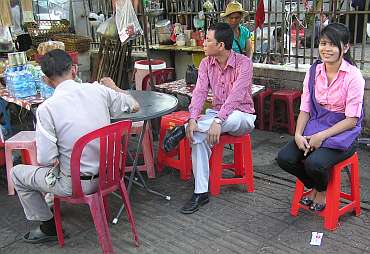 |
| In Kampot, as he had done in Phnom Penh and Kampong Chhnang, Bunthok spoke to the parents about the accomplishment of their children and about other DDP projects that could benefit them. We had the ceremony in a small restaurant near the government school where DDP has its classroom. | 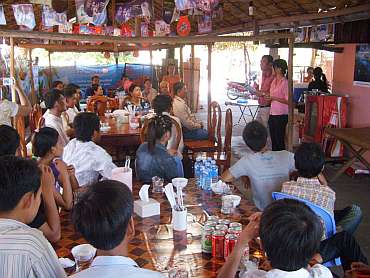 |
| Ten students who finished the course in December came today to receive their certificates. Two others could not attend. | 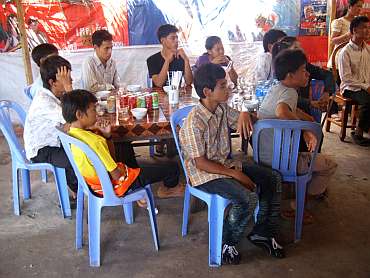 |
| After giving a short talk of encouragement to the students and their families, Charlie Dittmeier then presented their certificates to the students. |  |
| Then it was time to eat a traditional Khmer meal. I was eating a spicy Khmer salad that isn't my favorite (I think it's an acquired taste) when our DDP interpreter sitting next to me pointed out the large red ants she had picked up on her chopstick, and then showed me where they were in my salad. I could have done without that, but then knowing that they were supposed to be in the salad (along with two other types of large insects I found distributed throughout the cabbage-like salad) was probably better than discovering them by accident and thinking their presence was just poor hygiene. The interpreter seemed thrilled to see the insects but I really couldn't taste any difference they made to the dish. | 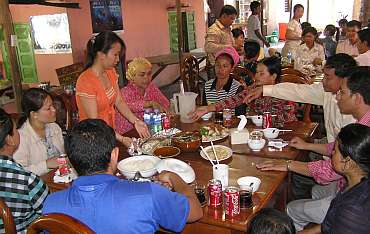 |
| A non-Cambodian coming from another country and culture can't expect things to be just like home and will be eternally frustrated if he does have that expectation. Things are just done differently in different countries. This is the restaurant's cooking utensil storeroom, an old wooden bed set in an open area in the back by the toilets. It took me a while to figure out if this was clean dishes or dirty dishes because there were several plates of food set among the mostly clean cooking utensils waiting for future use. | 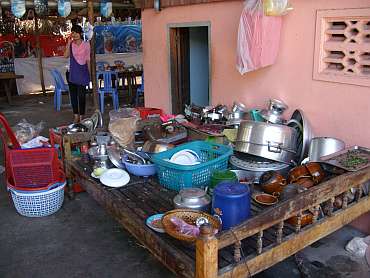 |
| After the ceremony and the meal, we went to a bus station for a bus ride back. Outside the bus departure point (it wouldn't be accurate to call it a station) is this bow tree with a shrine next to it. It was under a bow tree that the Buddha received his enlightenment. | 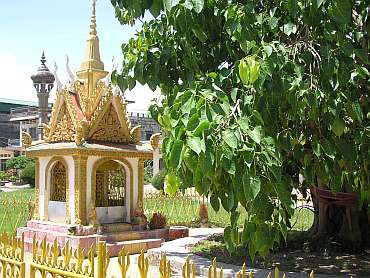 |
| This is National Road #3 from Phnom Penh to Kampot on the southern coast. Its looks are deceiving. After all the dirt roads it is encouraging to see pavement, but its surface is like a washboard and forces especially the bigger vehicles to travel at a crawl. It took our bus 4.5 hours to travel the 90 miles back to Phnom Penh. | 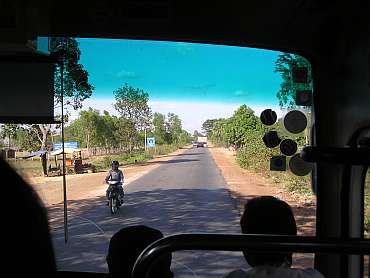 |
| We were near several garment factories as they were changing shifts and were passed by ten or twelve of these open trucks loaded with young women garment workers. They stand in tight rows in the back of the truck, holding on to overhead bars. Each truck carries 40-50 persons in the back. | 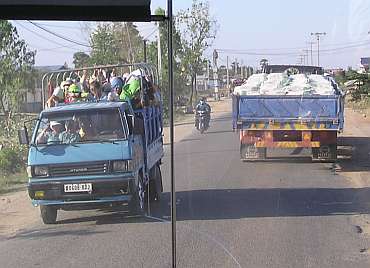 |
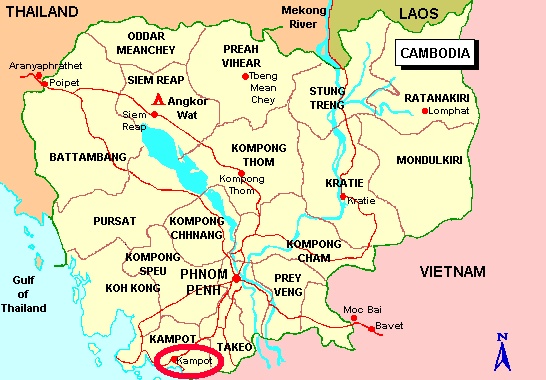 |
|